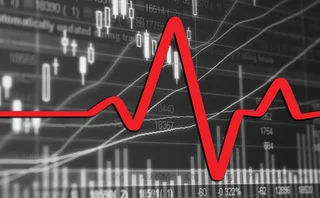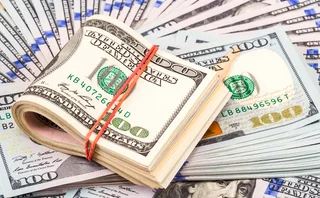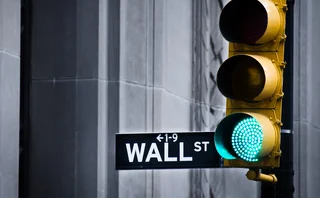
AIG dismantled risk controls on CDS portfolio, says Greenberg
American International Group Financial Products (AIGFP) dismantled existing risk management controls around its credit default swap (CDS) portfolio following the ousting of Hank Greenberg, the former chief executive has alleged in a new lawsuit.
Greenberg contends in the suit, filed in the Southern District Court of New York on February 27, that his successor Martin Sullivan "presided over the rapid increase of AIG's volume of CDS. Most of the increase involved collateralized debt obligations (CDOs) exposed to subprime mortgages [and] as of December 31, 2007, CDS issued by AIG hedged the default risk on at least $527 billion in debt, including debt securities backed by subprime mortgages."
According to the complaint, AIGFP began selling CDSs in 1998, but under tight supervision: AIG management monitored the unit "and its risk portfolio very closely through numerous internal risk controls, including independent and outside monitoring" and "only a handful of CDS [were] written with any subprime mortgage exposure between 1998 and March 2005".
Greenberg was forced out of AIG after 34 years as chief executive as part of then-New York attorney-general Elliot Spitzer's investigation into widespread fraudulent conduct across the US insurance business and allegations of accounting irregularities and earnings manipulation at the firm.
Greenberg's risk management architecture around AIGFP included having the head of the unit reporting directly to him, with oversight supported by AIG's credit risk and market risk departments and additional monitoring by outside consultants, consultants and AIG's board of directors. Every new transaction or transaction over a certain size -including most CDSs - had to pass a review by AIG's chief credit officer.
These risk controls over AIGFP were allegedly "weakened or eliminated" once Greenberg left the company, with Sullivan abolishing the weekly portfolio risk meetings his predecessor had held, cited as an example of how controls were allowed to slip.
The relaxation of controls coincided with an "explosion" in AIGFP's volume of CDS contracts, "most of which involving CDOs exposed to subprime mortgages" to reach $527 billion by the end of 2007. The suit does not specify the size of the unit's notional CDS position at the time Greenberg stepped down in March 2005, however.
AIG, however, dismissed Greenberg's suit as an attempt to distance himself from blame for the company's CDS losses. A spokesperson for AIG stated that allegations that risk controls in AIGFP were relaxed after Greenberg's departure were "not true", and added the former chief executive was "directly responsible" for the formation of AIGFP and its varied businesses, including the multi-sector CDS book.
"When he left AIG after saying he could not rule out invoking his Fifth Amendment rights against self-incrimination before a regulatory inquiry, the multi-sector book - which included subprime risk - had already grown to approximately $40 billion and he knew that these swaps were not hedged. Given this, it strains common sense to accept Greenberg's allegations that he was misled or did not appreciate the risks from the multi-sector CDS book written by AIG. His suit is utterly without merit," said the AIG spokesperson.
The main charge of the complaint is that material "misrepresentations and omissions" by AIG management led Greenberg to agree to value stock awarded to him as compensation "at an artificially inflated price."
On January 30, 2008, Greenberg received 3,680,759 AIG shares valued at $54.37 a share. The holdings were treated as ordinary income worth over $200 million, resulting in Greenberg paying over $70 million in tax. On US television on March 3, he stated that the total personal cost to him of AIG's tumbling equity price has been in excess of $2 billion.
Greenberg alleges that despite the $54.37 share valuation he was given on January 30, on February 28 AIG revealed in its 10-K filing to the Securities and Exchange Commision that the value of its CDS portfolio had dropped by $11.5 billion during 2007, leading to its then largest-ever quarterly loss of $5.3 billion.
That quarterly loss was eclipsed by the ailing giant's virtual collapse in 2008 and subsequent series of rescues by the US government, which led to a fourth-quarter loss of $61.7 billion and a staggering annual loss of $99.3 billion for 2008. As of March 3, AIG common equity was trading at just $0.43.
See also: US to restructure AIG bailout after $61.7 billion Q4 loss
Fed to lend additional $37.8 billion to AIG
US government takes control of AIG
Only users who have a paid subscription or are part of a corporate subscription are able to print or copy content.
To access these options, along with all other subscription benefits, please contact info@risk.net or view our subscription options here: http://subscriptions.risk.net/subscribe
You are currently unable to print this content. Please contact info@risk.net to find out more.
You are currently unable to copy this content. Please contact info@risk.net to find out more.
Copyright Infopro Digital Limited. All rights reserved.
As outlined in our terms and conditions, https://www.infopro-digital.com/terms-and-conditions/subscriptions/ (point 2.4), printing is limited to a single copy.
If you would like to purchase additional rights please email info@risk.net
Copyright Infopro Digital Limited. All rights reserved.
You may share this content using our article tools. As outlined in our terms and conditions, https://www.infopro-digital.com/terms-and-conditions/subscriptions/ (clause 2.4), an Authorised User may only make one copy of the materials for their own personal use. You must also comply with the restrictions in clause 2.5.
If you would like to purchase additional rights please email info@risk.net
More on Credit markets
Liquidnet sees electronic future for grey bond trading
TP Icap’s grey market bond trading unit has more than doubled transactions in the first quarter of 2024
Single-name CDS trading bounces back
Volumes are up as Covid-driven support fuels opportunity for traders and investors
Podcast: Richard Martin on improving credit migration models
Star quant proposes a new model for predicting changes in bond ratings
CME to pass on Ice CDS administration charges
Clearing house to hike CDS index trade fees from July after Ice’s determinations committee takeover
Buy side fuels boom in single-name CDS clearing
Ice single-name CDS volumes double year on year following switch to semi-annual rolls
Ice to clear single-name bank CDSs from April 10
US participants will be able to start clearing CDSs referencing Ice clearing members
iHeart CDS saga sparks debate over credit rules
Trigger decision highlights product's weaknesses, warns Milbank’s Williams
TLAC-driven CDS index change tipped for September
UK and Swiss bank Holdco CDSs likely inclusions in next iTraxx index roll, say strategists







